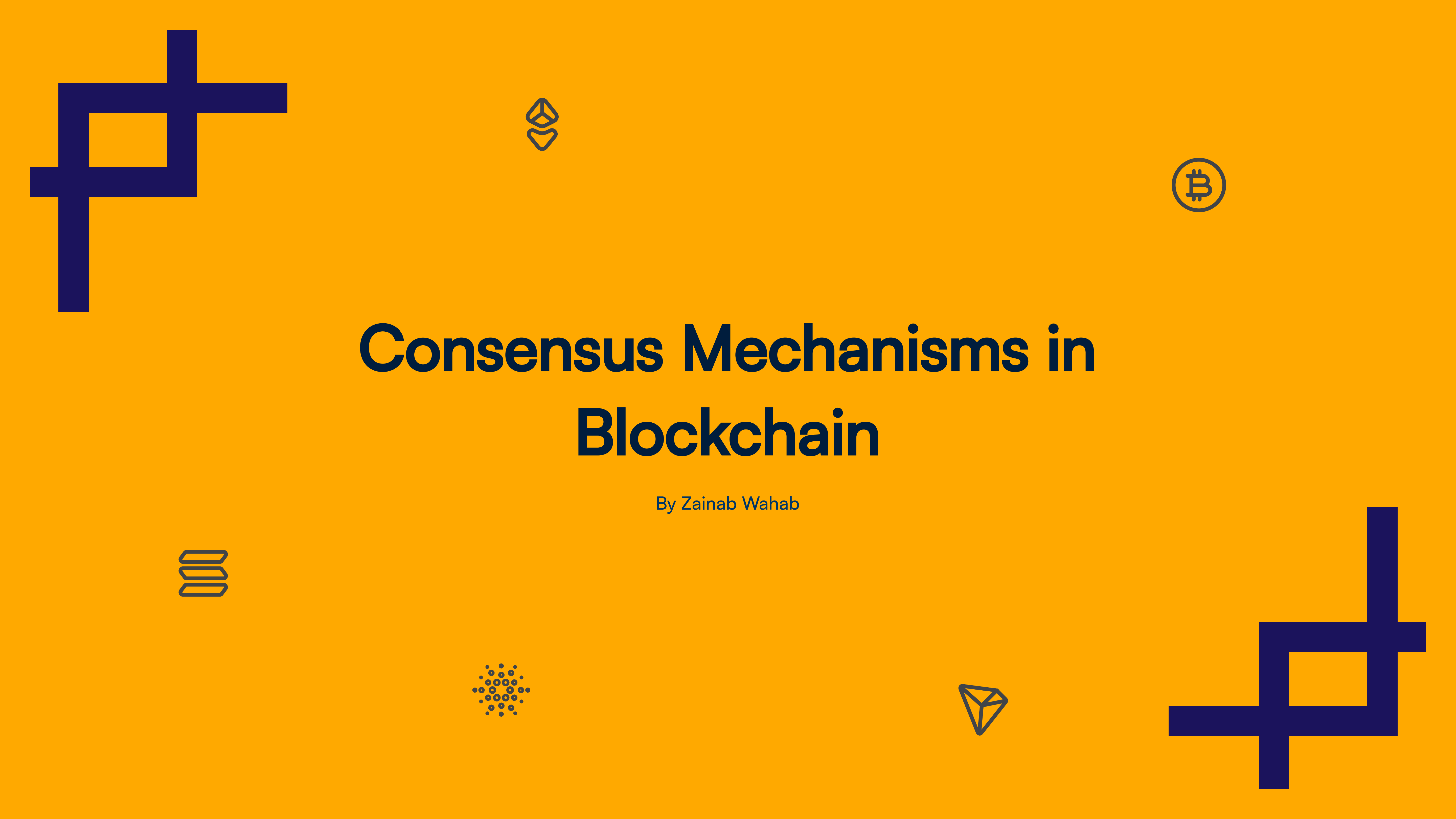Blockchain Consensus Mechanisms
 Zainab Wahab
Zainab Wahab
A consensus mechanism is a protocol used to determine which mining node will add a new block to the blockchain.
It allows miners and validators to agree on which block is valid and ensures that the process remains decentralized, secure, and transparent.
Since consensus mechanisms remove the need for centralized authorities, they are vital for maintaining trust within blockchain networks.
Different blockchains utilize various consensus mechanisms to prevent malicious nodes from manipulating the system.
By agreeing on a particular state of the blockchain, these mechanisms enhance security, foster trust, and ensure that all transactions are valid and transparently recorded.
Proof of Work (PoW)
PoW is one of the oldest consensus mechanisms used in blockchains like Bitcoin and Litecoin. In PoW, miners (nodes) compete to solve complex cryptographic puzzles.
The first to solve the puzzle gets to add the new block to the blockchain. This method requires high computational power. PoW ensures that miners have done legitimate computational work, reducing the chances of malicious behaviour.
The downside of PoW is that it is slow, energy-intensive, and expensive due to its high computational demands.
Proof of Stake (PoS)
PoS was introduced to address the issues with POW with blockchains like Ethereum and Cardano adopting it.
Instead of competing to solve puzzles, validators in PoS are chosen to validate transactions based on the number of coins they hold and stake in the network.
PoS is much more energy-efficient than PoW, as it does not require significant computational power. Validators are incentivized to behave honestly, as they risk losing their staked coins if they act maliciously. However, PoS can be criticized for potentially favoring wealthy validators, leading to centralization.
There are also variations of PoS, such as;
Delegated Proof of Stake (DPoS) which allows coin holders to vote for delegates who will validate transactions, as seen in TRON.
Leased Proof of Stake (LPoS) which LPoS enables users to lease their coins to other validators to increase their influence in the blockchain.
Proof of Capacity (PoC)
PoC is used by blockchains like Burstcoin. Instead of relying on computational power or staked coins, PoC allocates mining rights based on the amount of free hard drive space a node has.
The more space a node dedicates, the higher the chance it has to validate the next block.
Byzantine Fault Tolerance (BFT)
BFT ensures that blockchain systems can continue to operate properly, even if some nodes fail or act maliciously.
In BFT systems, a system of checks and balances allows multiple nodes to agree on decisions before they are finalized, which prevents one faulty or dishonest node from disrupting the network.
There are two variations of BFT, including;
Practical Byzantine Fault Tolerance (PBFT): This involves nodes voting on the validity of transactions and blocks. As long as two-thirds of nodes agree, consensus is reached. PBFT is used in private blockchains like Hyperledger, where fast and reliable consensus is crucial.
Delegated Byzantine Fault Tolerance (dBFT): dBFT assigns specific nodes to validate transactions. Validators are elected, ensuring fast and efficient consensus.
Proof of Activity (PoA)
PoA combines both PoW and PoS mechanisms. Miners first use PoW to create a block, but instead of filling the block themselves, they rely on a randomly selected validator from a PoS system to verify the transactions.
Conclusion
Aside from those listed above, there are other consensus mechanisms like Proof of Authority, Proof of Burn, Proof of Elapsed Time, Proof of Activity, and Proof of Identity, among others.
No matter the type, the goal of consensus mechanisms is to ensure transparency, security, and trust in blockchain networks by distributing validation responsibilities.
Each mechanism has its strengths and weaknesses, and the choice of mechanism depends on the specific needs and goals of the blockchain project.
Subscribe to my newsletter
Read articles from Zainab Wahab directly inside your inbox. Subscribe to the newsletter, and don't miss out.
Written by
